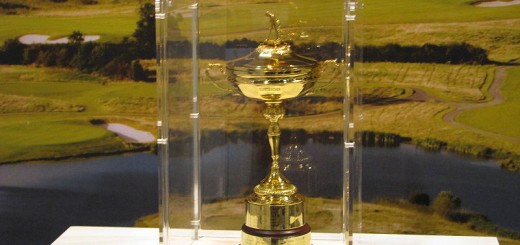The Fifty Spot
There is an accomplishment in pro basketball that is far more impressive than a Triple-Double. You all know what the Triple-Double is, of course. That would be a game where a player scored at least ten points, grabbed at least ten rebounds, and passed off for at least ten assists. That is, quite obviously, the standard of excellence today’s players go by, and it is a sign one has played a very good, all around game.
But it is not the BEST accomplishment a player can accomplish. A Triple-Double is given some kind of mystical quality by sportswriters and media people who think that a person who got double figures in each of those categories is somehow that much better than a player who was unfortunate enough to have only gotten nine rebounds, or nine assists that game. There is NOT a whole lot of difference from a person who got ten assists from a person who got nine. That is ONE extra pass, that may have been made very timely and very accurately, but the passee who received it may have just happened to have missed the shot that would have made it that tenth assist.
So, what is this feat that is BETTER than a Triple-Double, you might ask? I call it The Fifty Spot.
For want of a better definition, a Fifty Spot is that combination of points, rebounds, assists, and I also add blocked shots and steals, that TOTAL something that is fifty units or more. That’s fifty, as in a 5 and an 0. That player has contributed 50 units of contribution to the team. That player has IMPACTED that game. That player has probably contributed immensely toward his team winning that game. That player was probably that night’s “Player of the Game.”
Compare that to a Triple-Double, with his ten, ten and ten minimums to meet the requirement (and let’s be fair and add two steals and three blocked shots to his total) which is still ONLY 35 units. A Triple-Double on the night is STILL a good game. It STILL might get a guy the “Player of the Game” interview on the post-game show. That 35 Spot s not bad basketball, of course, but it is STILL 15 shy of 50. In other words, as good as a Triple-Double is, the Fifty Spot is even better.
Now, there are degrees of quality for your Fifty Spot types of games. Points are the easiest part of the equation to accomplish (especially with a player getting rewarded three points for a shot from beyond the three-point line), so a game with 45 points, two rebounds, one blocked shot, one steal and one assist is NOT as impressive as a game with 22 points, 18 rebounds, four assists, four blocked shots and two steals. Or a game with eight points, but 10 rebounds, 21 assists, eight steals and three blocked shots.
The Fifty Spot game has a greater measure on the total impact a player has on the game than almost any other statistic that can be dragged up. The Fifty Spot with a SMALLER amount of points than the other four categories usually has an even greater impact on the game than a game where one player takes a lot of attempts and just so happens to score a lot of points and get close to 50 that night. The more “defensive” units you can contribute (rebounds, steals, and blocked shots), the better.
A great Fifty Spot game means you are contributing to scoring (some), rebounding (important to get the ball and not let the opponents get it), assists (you are passing enough to get YOUR teammates involved), steals (steals usually convert to easier baskets the other way), and blocked shots (you are playing great defense). To total FIFTY of these units is to have really played a great, great game. There aren’t that many of these games played over an entire season (nowadays, they usually happen because of a high point scoring game).
The person who most embodies the spirit of the player impacting the game with Fifty Spot type performances is Le Bron James, now of the Cleveland Cavs. He usually averages somewhere around 25 points, seven or so rebounds, seven or so assists, a couple of blocks and a couple of steals per game. Somewhere around 40 – 45 units of accomplishment per game, when he steps it up in any of these categories, he has that potential of putting up a Fifty Spot. And his contributions are usually the primary reason that his teams have been winning. THAT is the reason why he is considered great. His impact on all of the games. Especially his ability to do it in the playoffs.
There needs to be a special mention of a few of the other all time greats and their inclusion into this conversation. They are some of the greatest players of all time and they all have something in common statistically that helps define their greatness.
Wilt Chamberlain once averaged (in 1961-62) 50 points a game, 25 rebounds, two assists and (stats weren’t kept for this back then, but you’d have to guess a 7-foot tall guy would have averaged three blocks and/or steals per game) at least three “other” units of statistics, for a total of an AVERAGE of an Eighty Spot per game, all season. One must include that he averaged 39 shot attempts per game that year, but the numbers are still staggering. He still, during many years of his career, averaged a Fifty Spot, with many of those stats being valuable rebounds (career average of over 22 rebounds per game) and blocked shots.
Bill Russell, he of the 11 championships in his 13 year career, usually threw together average seasons of about 16 – 18 points per game, 22 – 24 rebounds per game, 4 – 5 assists per game, and, you would have to give him 3 – 5 blocks per game and 2 – 3 steals per game. In other words, without the big point totals, he averaged close to a Fifty Spot, with most of his production coming from rebounds, blocks and steals. Given that HE was the main reason his Boston Celtic teams won so many championships from his era (1956 – 1769), you could see how the low scoring, but still close to Fifty Spot production could help his teams win. An unkept statistic, but one I’m sure Russell and Chamberlain both excelled in, would be “how many shots were missed through their defensive play and intimidation.” Defense does, after all, still win championships.
Oscar Robertson was the man who was famous because one season he once averaged a Triple-Double. During his 1961-62 season, he averaged almost 31 points per game, 12 rebounds per game and 11 assists per game. In other words, he also averaged considerably more than a Fifty Spot per game. When someone wants to talk about a normal Triple-Double and act like it is the greatest thing since sliced bread, I give you Oscar Robertson, who averaged a Fifty Spot Triple-Double. Ten points, ten rebounds and ten assists are good, but 30 points, 12 and 11 are BETTER.
Michael Jordan had many seasons where he averaged over 30+ points per game and enough assists, rebounds and steals to AVERAGE a Fifty Spot season. He did many of those when he was the only star on the team and the Bulls would not have enough firepower to get past the Celtics and the Pistons in the East. He actually was MORE valuable to his team when he produced more like a 45 spot type of statistical season and passed off to help out teammates, thus allowing his teams to win six championships during his amazing “Bull Run” between 1990 and 1998. A lot of Jordan’s greatness never even showed up in the stat sheet, since, when he was on defense, he simply shut down the person he was guarding at the critical times of the game. Those Bulls teams won because they played great defense and held their opponents to less points than normal. A 45 Spot during a low scoring game is more like a 55 Spot during a higher scoring game. Thus, Jordan’s greatness.
Magic Johnson put together many great seasons as he led the Lakers to five world titles and into the NBA finals in nine of his thirteen seasons. He would put 20+ points per game, 12 or so assists per game, 8 or so rebounds per game, along with a couple of steals and maybe a blocked shot per game to put himself at an average of about a 44 spot or so every game. Given that many times, he passed the ball into Kareem Abdul-Jabbar or James Worthy and they just worked to get their shots and Magic did not get those assists, one could say he too was putting up close to Fifty Spot production.
Larry Bird had many seasons where he’d score 28 points or so a game, average 10 rebounds a game and pick up six or so assists per game for his Boston Celtics team. Adding in a few steals and a blocked shot every now and then put him at near Fifty Spot productivity that he seemed to be able to achieve during many a big game. He helped his team, which had other Hall of Fame players like Kevin McHale and Robert Parish doing a lot of scoring and rebounding also, to three championships during the Magic/Kareem Lakers era. On teams with many other outstanding players who can score and rebound, it is tougher to accumulate Fifty Spots.
And a special nod has to be given to Walt Frazier of the New York Knicks, for his accomplishments in Game 7 of the 1970 NBA Finals (also known as “The Willis Reed Game”). Going up against a great L.A. Lakers team that had Jerry West, Elgin Baylor and Wilt Chamberlain on the team, Frazier put up one of the greatest Fifty Spots of all time. Frazier, playing most of the game directly against West, scored 36 points on 12 of 17 field goals, hitting 12 of 12 free throws, he had 19 assists (out of the 33 field goals scored by his teammates), 7 rebounds and 7 steals. In the biggest game of his life, with the entire championship riding on it, Frazier put up a 69 Spot, and almost single handedly won the game for the Knicks.
Oh, and by the way. Walt Frazier’s great game in Game Seven was NOT a Triple-Double.




